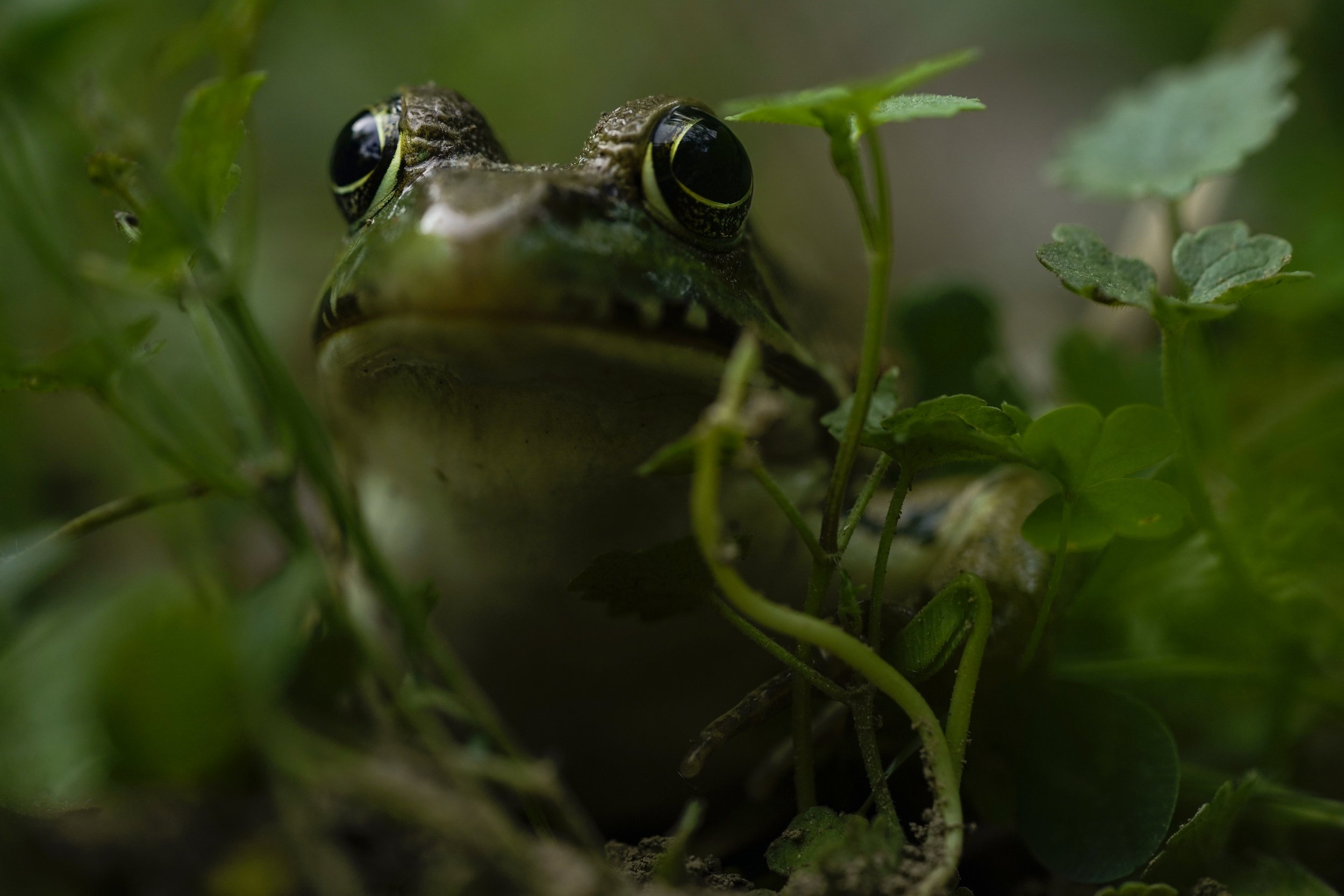Macro photography: The world up close

Macro photography is more than a way to photograph something small. It is a way to connect with and explore a subject. It is an adventure into light, color and texture that can move to the abstract. It can be a meditative process that transports me to a creative and surprising space.
I (Carolyn Kaster) always aim to share a different perspective or view, and macro photography is a great tool. A macro lens can capture the chiseled limestone dust, the eyes of a frog, raindrops on a cherry blossom, and the world of insects.
The nature of my work in Washington, D.C., photographing the president at the White House or politicians on Capitol Hill, can put me at a distance from my subject. Security and COVID-19 safety concerns have made one of my most valuable lenses a 70-200 mm. Macro photography is a different animal. I get to escape and explore and compose. It feels to me like drawing, reflective and playful.
The Shot is a monthly series showcasing top photojournalism from staff photographers at The Associated Press. Each month, AP photographers will share the stories behind some of their iconic imagery.
Produced by AP News staff. The sponsor was not involved in the creation of this content.
The emergence of the Brood X periodical cicadas this past spring was macro heaven. I used three different macro lenses on the Sony A9 II camera to explore the world of these beautifully weird insects. Each macro lens offered something different.
For the tight, clean, sharp images, shallow depth of field where the background falls away, I used the Sony FE 90mm f/2.8 Macro G OSS lens. It was the go-to lens for the closeups of eyes, wings, etc. It has a 1:1 magnification ratio, life-size, and 11" minimum focus distance, the minimum distance from the subject to the camera sensor. The autofocus is fast and helpful when holding a light with one hand and a camera in the other. The ED glass elements of this lens made for sharp images with excellent color. I use this versatile lens for everything, including landscapes, and I used this lens for the video of the cicada emerging.
It is also essential to show the cicada's habitat, give a sense of place, so I used two different wide-angle macro lenses.
The Venus Optics Laowa 24 mm F/14 Probe Lens with a Sony e-mount was great fun. It is a manual focus lens with a built-in ring light. It has a 2:1 magnification ratio, 1.5' minimum focus distance, and a working distance of 0.8", the distance from the subject to the front of the lens.
The rim light was bright enough, even at the F14, when a cicada was super close, almost touching the lens. You can see the circular rim light reflected in the cicada's eyes. In addition, the long, small-diameter lens barrel made it possible to photograph in tight spots. This probe lens takes you into the habitat of active cicadas at night, crawling up from the dirt and through the deep, dark grass.
The second wide macro lens I used was the Venus Optics Laowa 15mm F/4 Macro with a Sony e-mount. It is a versatile manual focus lens with a 1:1 magnification ratio and 4.7" minimum focus distance. I can get close to the subject, and the F/4 was a great complement to the F/14 probe lens. However, I had to be careful not to touch what I was photographing with the front of the lens; you could get lost.
I use many kinds of light to photograph cicadas and other small subjects at night. I find small flashlights and battery-powered utility lights from Home Depot work well or a hand-held strobe or rim light.
The soft light of an overcast day can be wonderful to see details and soft colors, and I always chase the natural light, the early and late day gold.
Spotlight is the blog of AP Images, the world’s largest collection of historical and contemporary photos.
Produced by AP News staff. The sponsor was not involved in the creation of this content.

